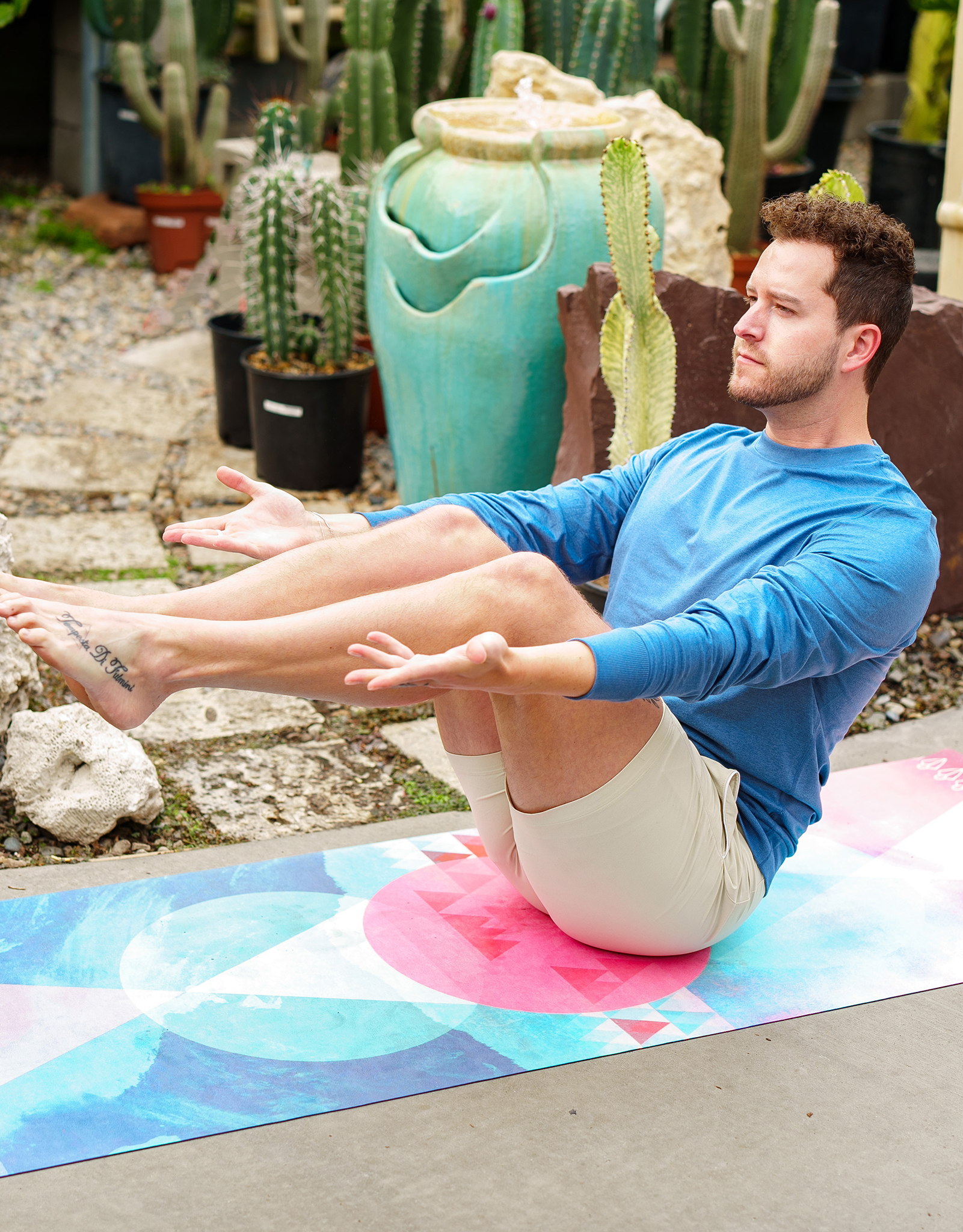This entry was posted on Apr 16, 2025 by Charlotte Bell.

A robust core is crucial to so many elements of our each day lives. Tending to our core muscle groups—the abdominals and again muscle groups—is core (so to talk) to our yoga asana follow. Yoga’s most iconic belly strengthener, Boat Pose (Navasana), may be extraordinarily difficult, and infrequently contraindicated for individuals simply beginning out in asana follow. For that cause, a modified model of Navasana may be a good way to wade into core strengthening.
Advantages of Core Strengthening
Listed here are a few of the advantages of strengthening your core:
- Promotes wholesome posture
- Improves stability and coordination
- Stabilizes the physique, in order that accidents resembling sprains and strains are much less possible
- Reduces again ache
- Promotes deeper respiration
- Makes on a regular basis actions resembling lifting, rising up from the ground extra easy
After we consider the core, our minds usually go proper to the abdominals. Nonetheless, our again muscle groups are additionally important gamers in core energy. Whereas Navasana is especially an abdominal-strengthening pose, it additionally has a secondary good thing about strengthening the again muscle groups as effectively. As well as, as a balancing pose, it helps us construct our balancing abilities.
Why Modify Navasana?
In contrast to the picture on the prime of this submit, the normal type of Navasana is practiced with straight legs. This model of the pose poses a number of challenges. First, straightening the legs in Navasana requires stretchy hamstrings. A practitioner with tight hamstrings will invariably must flex their lumbar backbone to an excessive. Second, the additional leverage straight legs exert on the physique may cause pressure.
The third problem applies principally to males. The middle of gravity for a feminine physique is decrease than it’s for a male physique. For most girls, the middle of gravity is within the pelvis; for males it’s within the low again. Which means the leverage straight legs exert on the physique will make it actually troublesome for males to search out stability in Navasana, particularly if it’s coupled with tight hamstrings.
A pair paragraphs in the past, I discussed lumbar spinal flexion (convex curve) in Navasana. Whereas it’s not wholesome to flex the backbone to an excessive in Navasana, just a little little bit of flexion, in order that the lumbar backbone is straight, is okay. In reality, that small little bit of flexion will allow the abdominals to have interaction a bit greater than if we’re making an attempt to take care of our lumbar (concave) curve. With a purpose to preserve a concave curve, we now have to stability on the entrance edges of our ischial tuberosities (aka “sitting bones”). Have you ever ever tried that? In my expertise, it’s in no way conducive to balancing.
The best way to Apply Navasana
- Collect your props: a Yoga Mat is all that’s vital.
- Begin in a seated place within the heart of your mat.
- Bend your knees and place the soles of your ft in your mat.
- Place your palms behind you on the ground in order that your torso leans again at a diagonal.
- Together with your palms nonetheless on the ground, carry your legs. Bend your knees in order that your shins are parallel to the ground. Your weight must be in your glutes. Keep away from making an attempt to balancing on the ahead fringe of your ischial tuberosities.
- Take a breath or two on this place. This pose could be a useful prelude to working towards Navasana. It engages the abdominals with out producing any again pressure.
- When you really feel prepared, carry your arms up and lengthen them straight ahead at shoulder degree. Your palms can face your legs, or face up or down, relying on what feels greatest for you.
- Take 3 to five, or extra, deep breaths right here.
- Then launch the pose and relaxation along with your ft on the ground, palms behind you on the ground. Repeat for those who like.
About Charlotte Bell
Charlotte Bell found yoga in 1982 and started instructing in 1986. Charlotte is the writer of Conscious Yoga, Conscious Life: A Information for On a regular basis Apply and Yoga for Meditators, each printed by Rodmell Press. Her third ebook is titled Hip-Wholesome Asana: The Yoga Practitioner’s Information to Defending the Hips and Avoiding SI Joint Ache (Shambhala Publications). She writes a month-to-month column for CATALYST Journal and serves as editor for Yoga U On-line. Charlotte is a founding board member for GreenTREE Yoga, a non-profit that brings yoga to underserved populations. A lifelong musician, Charlotte performs oboe and English horn within the Salt Lake Symphony and folks sextet Pink Rock Rondo, whose DVD received two Emmy awards.

